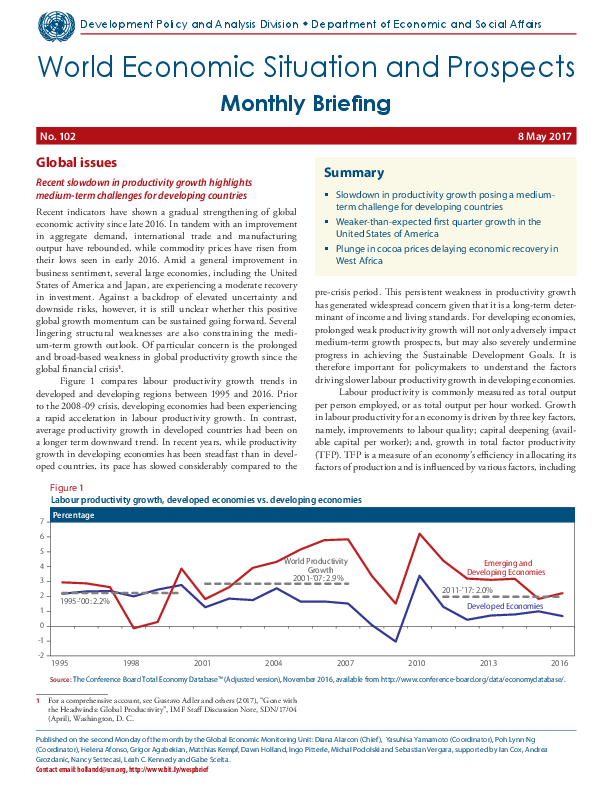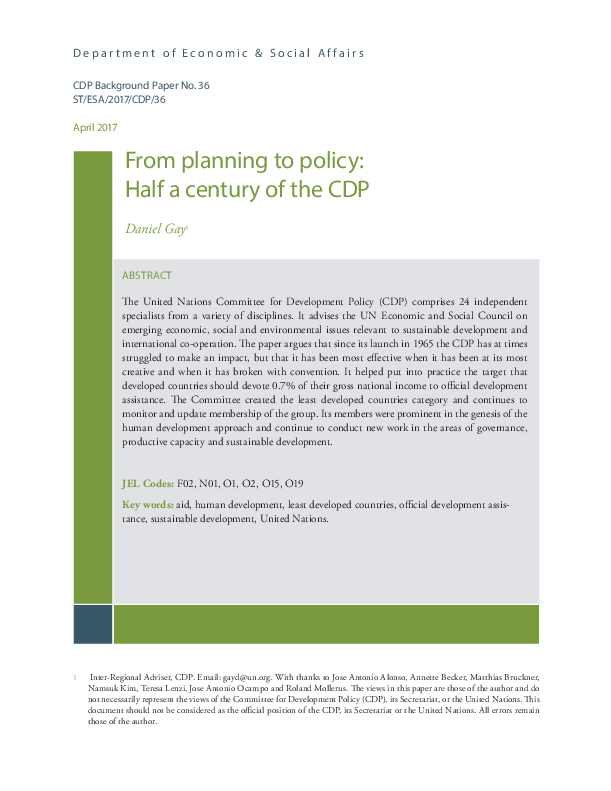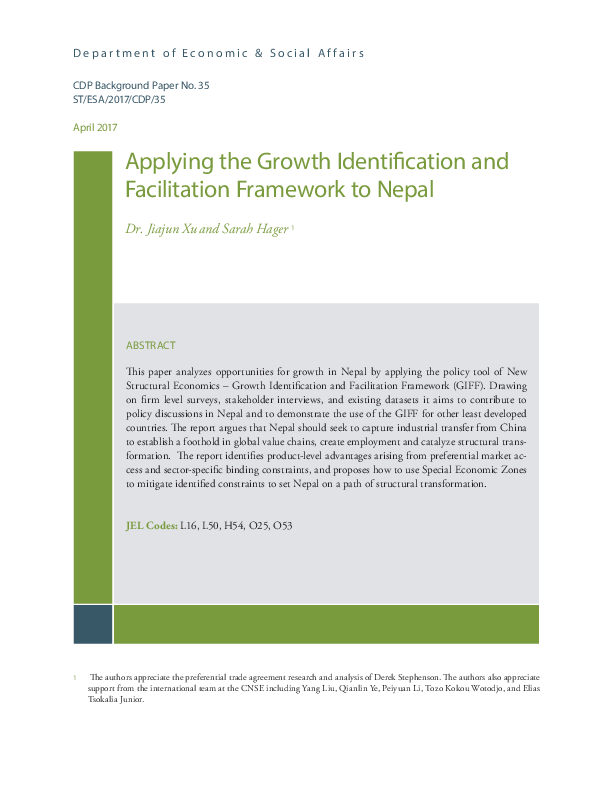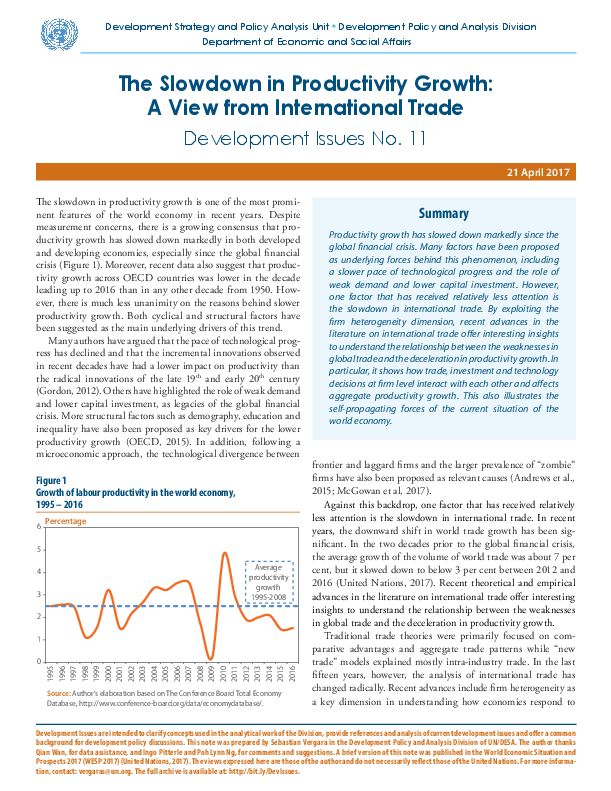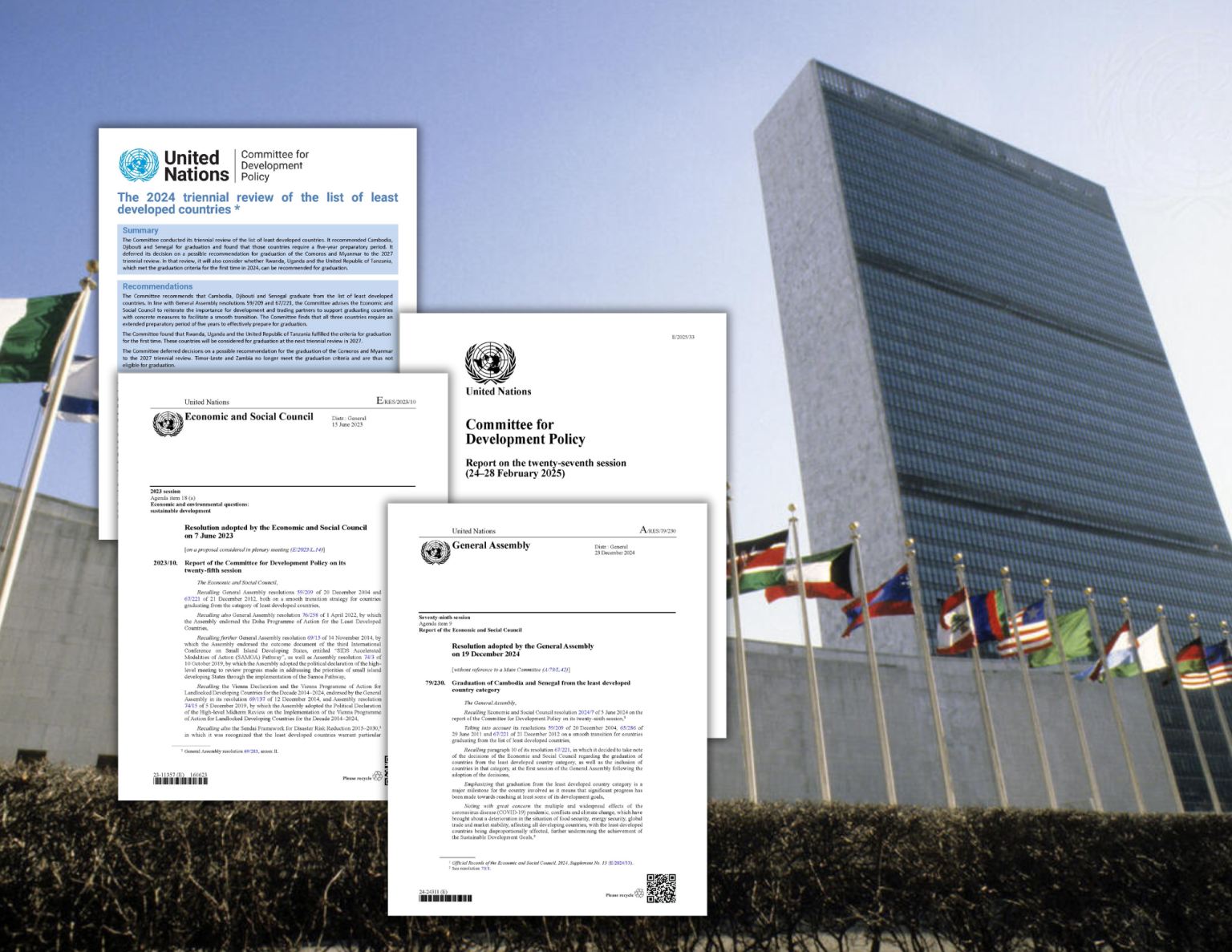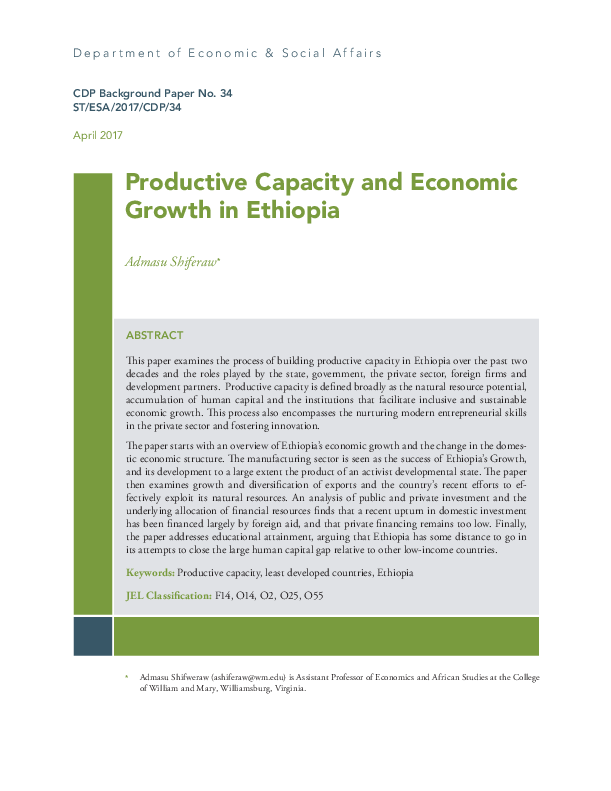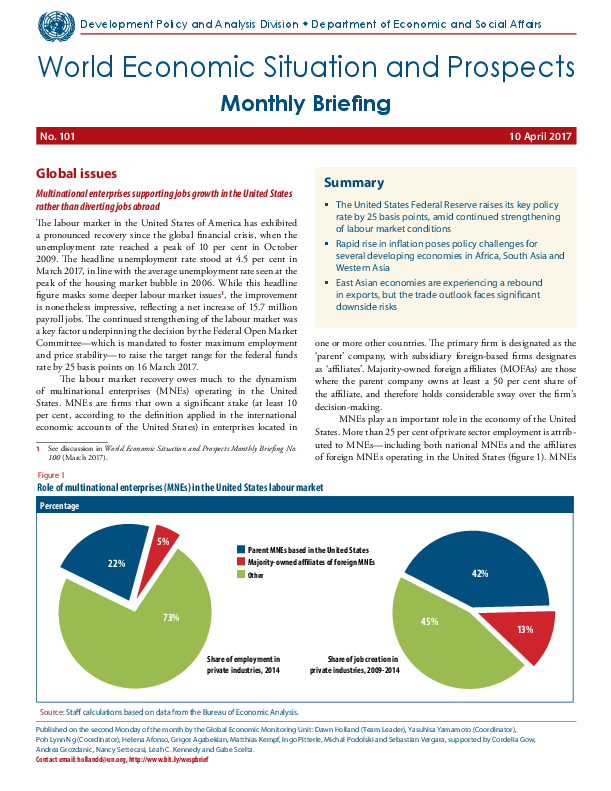Publications
Displaying 431 - 440 of 1084
Weaker-than-expected first quarter growth in the United States of America
Plunge in cocoa prices delaying economic recovery in West Africa
The CDP helped put into practice the target that developed countries should devote 0.7% of their gross national income to official development assistance. The Committee created the least…
Rapid rise in inflation poses policy challenges for several developing economies in Africa, South Asia and Western Asia
East Asian economies are experiencing a rebound in exports, but the trade outlook faces significant downside risks
 Welcome to the United Nations
Welcome to the United Nations
